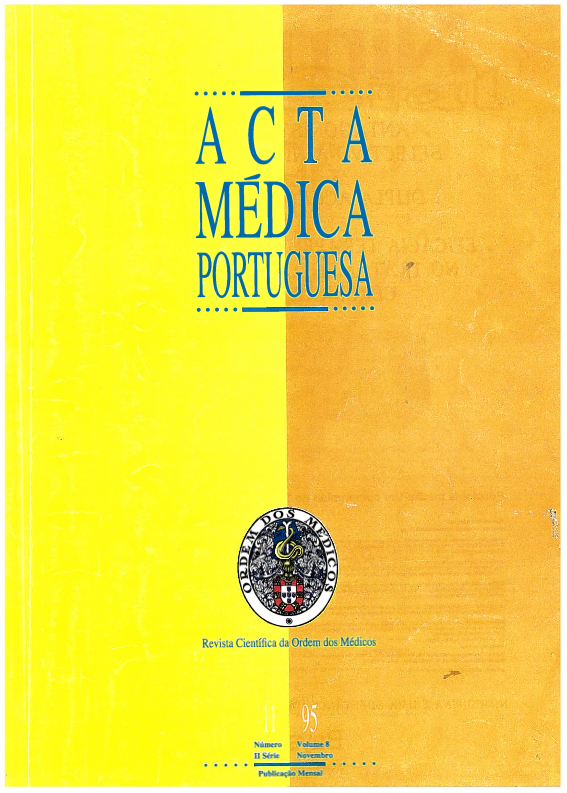Spinal epidural empyemas.
DOI:
https://doi.org/10.20344/amp.2756Abstract
We report ten patients harbouring spinal epidural abscess, aiming to evaluate the factors that may lead to an early diagnosis and that can eventually influence the prognosis. There were seven males and 3 females, with ages comprised between 17 and 66 years. Abscesses were localised mainly in the dorsal region. The most important predisposing factors were infections or other disorders know to be related with compromise of the immunological system. Back pain with or without signs of spinal cord involvement was the most frequent clinical presentation. The pretreatment average time was 16,3 days. Staphylococcus aureus was the most commun organism isolated. Erythrocyte sedimentation rate (ERS) was uniformly elevated, being the most important laboratory data for the diagnosis of this situation. Diagnosis was frequently made on clinical grounds but it was always confirmed by myelography with computed tomography or magnetic resonance. All patients were submitted to surgical drainage. Two patients recovered totally, 5 partially, 2 did not recover at all and 1 died. We conclude that the prognosis is related to the surgical delay and that it depends on the identification of the predisposing factors and the recognition of a clinical picture of spinal cord involvement associated to an elevated ESR. Magnetic resonance is the most reliable imaging technique.Downloads
Downloads
How to Cite
Issue
Section
License
All the articles published in the AMP are open access and comply with the requirements of funding agencies or academic institutions. The AMP is governed by the terms of the Creative Commons ‘Attribution – Non-Commercial Use - (CC-BY-NC)’ license, regarding the use by third parties.
It is the author’s responsibility to obtain approval for the reproduction of figures, tables, etc. from other publications.
Upon acceptance of an article for publication, the authors will be asked to complete the ICMJE “Copyright Liability and Copyright Sharing Statement “(http://www.actamedicaportuguesa.com/info/AMP-NormasPublicacao.pdf) and the “Declaration of Potential Conflicts of Interest” (http:// www.icmje.org/conflicts-of-interest). An e-mail will be sent to the corresponding author to acknowledge receipt of the manuscript.
After publication, the authors are authorised to make their articles available in repositories of their institutions of origin, as long as they always mention where they were published and according to the Creative Commons license.









